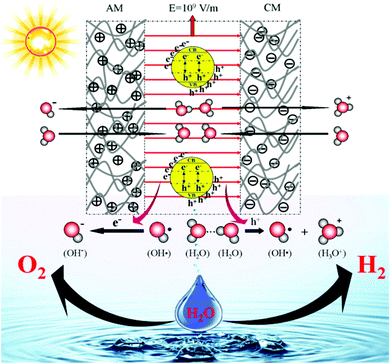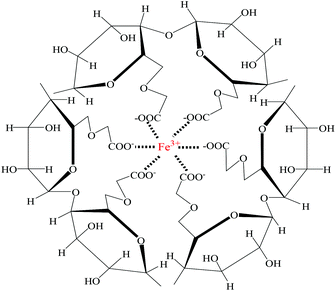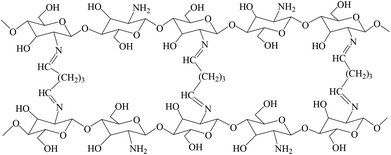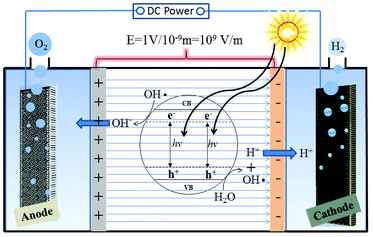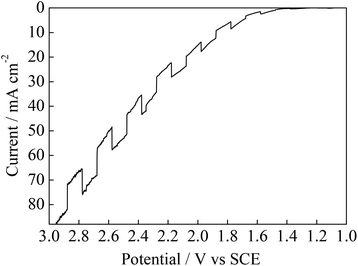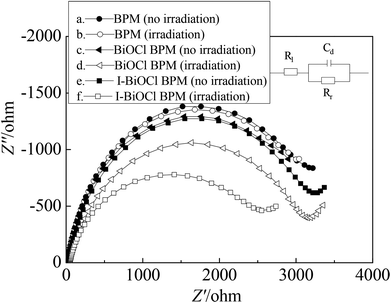A novel photoelectrocatalytic approach for water splitting by an I-BiOCl/bipolar membrane sandwich structure†
Xian
Liu
,
Huimin
Yang
,
Hongyan
Dai
,
Xiaoming
Mao
and
Zhenhai
Liang
*
College of Chemistry and Chemical Engineering, Taiyuan University of Technology, Taiyuan, Shanxi 030024, People's Republic of China. E-mail: liangzhenhai@tyut.edu.cn
First published on 25th September 2014
Abstract
A novel photoelectrocatalytic approach for water splitting through an I-BiOCl/bipolar membrane sandwich structure with photoelectro-synergistic catalysis is proposed in this study. The I-BiOCl/bipolar membrane sandwich structure could facilitate separation of photoexcited electrons and holes, thereby promoting the splitting of water, increasing the efficiency of H2 generation and saving energy consumption.
The current global energy consumption is rapidly increasing, whereas supplies are declining.1 Pollution and climate change are undesirable effects that entail global concern.2,3 Sunlight, as an environmentally friendly and practically unlimited energy source, could enable “indefinite” and sustainable economic growth with a minimum detrimental effect on the environment.4–7 Direct conversion of sunlight into chemical energy is one of the most important challenges that scientists need to address within the next few decades.8–10 Efficient water splitting is a key process that must be developed because water is the most abundant, affordable and sustainable source of energy. Photocatalytic and electrocatalytic water splitting has attracted significant attention because of energy and environmental issues.11–14
BiOCl, one of the most important green photocatalysts, has aroused considerable interest for its applications.15,16 The layered structure of BiOCl could provide sufficiently large space to polarise related atoms and orbits.17 However, the wide-bandgap energy of BiOCl leads to inefficient use of solar energy. Therefore, extending the light absorption edge of BiOCl to the visible light region is crucial for effective utilisation of visible light (42% of the energy of the solar spectrum). Thus far, a visible-light response catalyst has been developed using several strategies, including doping,18 morphology controlling,19 formation of a heterojunction20 and surface modification.21 Among these methods, anion doping is the most widely investigated because of its effectiveness in broadening the light-responsive range of wide-bandgap semiconductors.22 In the present study, iodine has been selected as a dopant into BiOCl because it has a smaller electronegativity than chlorine (2.66 vs. 3.16, respectively). The bandgap energy of iodine-doped BiOCl decreased to 2.30 eV. Therefore, the visible-light photoresponse significantly improved, which could enhance the visible-light catalytic activity.
Recombination of photoexcited electrons and holes in the bulk material is one of the most detrimental factors that affect the photocatalytic activity. Another negative factor is the in situ reverse reaction of the as-formed H+ and OH− to form H2O again on the surface of a photocatalyst. Therefore, the present study proposes a novel photoelectrocatalytic approach using an I-BiOCl/bipolar membrane (I-BiOCl/BPM) sandwich structure for water splitting. The structure consists of an anion-exchange membrane layer, a cation-exchange membrane layer and an I-BiOCl catalyst layer (i.e. interlayer) (Scheme 1). This distinctive I-BiOCl/BPM sandwich structure presents three advantages. (1) The high-electric field at the interlayer contributes in separating photo-induced electron–hole pairs, thereby improving the photoelectric conversion efficiency. (2) According to Simons theory,23 water dissociation occurs through the following mechanism (chemical reaction model):
| h+ + H2O → OH˙ + H+ | (1) |
| e− + OH˙ → OH− | (2) |
In a high-electric field, H+ and OH− are generated at the interlayer of the BPM, and migrate into the cathode and anode chambers, respectively, thereby decreasing the reverse reaction of the as-formed H+ and OH− to form H2O again. (3) It surmounts the immediate sedimentation of the catalyst powder and the difficult extraction from the solution by immobilising with BPM.
Carboxymethyl cellulose (CMC), an easily available and very affordable natural polymer macrostructure, exhibits efficient viscosity building, flocculation and stability.24 The –COO− groups of CMC were combined with Fe3+ to form a metal chelate polymer with a net structure (Fig. 1), thereby improving the dimensional stability of BPM and structural stability. Chitosan (CS) is an important polysaccharide because of its several advantages.25,26 CS is a renewable green material because of its enormous quantity on earth, as well as environment friendly because of its chemical stability and biodegradability. The two aldehyde groups of glutaraldehyde were combined with the –NH2 groups of CS to form a net structure (Fig. 2), improving the dimensional stability of BPM and structural stability. Therefore, CMC and CS were combined using a paste method to prepare I-BiOCl/BPM. The method and process of preparation are shown in the ESI (Fig. S1†).
This study describes the use of the I-BiOCl/BPM sandwich structure as diaphragms for water splitting (Scheme 2). The interlayer has a nano-size thickness (10−7 m to 10−9 m); thus, the electric field intensity at the interlayer reaches from 107 V m−1 to 109 V m−1 when 1 V is applied. Protons and hydroxide ions are generated at the interlayer using a high-electrical field and solar irradiation, and then migrated into the cathode and anode chambers, respectively. Application of I-BiOCl/BPM is presented and discussed, and the efficiency and energy consumption of H2 production using the I-BiOCl/BPM sandwich structure are also described.
I-BiOCl with a visible-light response was prepared at room temperature; the preparation procedure is depicted in Fig. S2.† The XRD results showed a decreased lattice parameter for I-BiOCl (Fig. S3†). Moreover, UV-Vis DRS revealed a shift in the optical absorption edge towards higher wavelength, indicating a decrease in the band gap after iodine doping (Fig. S4†). The XPS spectra showed that the I-BiOCl sample contained Cl, O and Bi, and some of the iodine also entered the BiOCl lattice (Fig. S5; ESI†).
The current–voltage curves (I–V curves) for different BPM-equipped cells before and after sunlight irradiation are shown in Fig. 3. I-BiOCl BPM exhibited lower voltage, suggesting that the I-BiOCl catalyst had higher catalytic activity than BiOCl in the water splitting using solar energy. This finding could be attributed to the significantly decreased crystallite sizes and band-gap energy of BiOCl after iodine doping, which enhanced the absorption of visible light and produced more electron–hole pairs from the I-BiOCl catalyst. Moreover, the high-electric field at the interlayer contributed in separating the photo-induced electron–hole pairs, thereby decreasing the recombination of the electrons and holes. Furthermore, the high-electric field resulted in generation of H+ and OH− at the interlayer and migration into the cathode and anode chambers, respectively. Therefore, the reverse reaction of the as-formed H+ and OH− to form H2O again decreased, further promoting the splitting of water. (The experimental method for measuring the I–V curve of BPM-equipped cells is shown in the ESI†.) I-BiOCl BPM dramatically reduced the membrane impedance and cell voltage under no irradiation (curves b and f). Because a large number of OH groups were present on the surface of I-BiOCl nanoparticles, hydrogen bonds were formed between water molecules and nanoparticles, which led to improvement in hydrophilicity of the I-BiOCl BPM (Fig. S6†). Improvement of the hydrophilicity increased the interaction between I-BiOCl BPM and water molecules and relaxed the bonds of the molecule in water. This further promoted the splitting of water and reduced the membrane impedance and cell voltage.27Fig. 4 shows the photocurrent and potential response under chopped illumination from a 350 W xenon lamp with 350–760 nm filters.28 This measurement was carried out by a narrowband shading plate, and the frequency was controlled by a stepping motor. The sharp increase and decrease of current with illumination and darkness indicate the excellent photoelectro-chemical properties. The results of the AC impedance spectroscopy of different BPMs showed the equivalent electrical circuit of the AC impedance for BPMs as shown in Fig. 5. Cd is the capacitive impedance of the interlayer, Rr is the impedance of the membrane, and R1 the impedance of the bulk solution. The size of the high-frequency semicircle indicated the approximate impedance of different BPMs (Fig. 4). The membrane impedances of different BPMs were presented in the following order: BPM (no irradiation) > BPM (irradiation) > BiOCl/BPM (no irradiation) > I-BiOCl/BPM (no irradiation) > BiOCl/BPM (irradiation) > I-BiOCl/BPM (irradiation). This finding could be attributed to the impedance of BPM that mainly occurred at the intermediate layer. In addition, photoelectro-synergistic catalysis promoted the splitting of water into protons and hydroxyl ions, thereby decreasing the membrane impedance. The membrane impedance of BiOCl/BPM was lower than that of the I-BiOCl/BPM because I-BiOCl had better catalytic ability under solar irradiation.
Fig. 6 shows the dependence of hydrogen generation on current densities. The KCl concentration was 0.5 mol, and the current densities increased from 20 mA cm−2 to 200 mA cm−2. A pH-meter (CRISON model micropH 2001) was used to measure the pH in the anolyte and catholyte (Fig. S7†). The results also showed that the H2 generation efficiency increased with current densities. At a current density of 200 mA cm−2, the H2 generation efficiency using the I-BiOCl/BPM sandwich structure reached 92% and 13% more efficient than the BPM under solar irradiation. In terms of energy consumption, the current density of H2 production is shown in Fig. 7. The data also demonstrated that the I-BiOCl/BPM sandwich structure exhibited the lowest energy consumption among all the samples. At a current density of 200 mA cm−2, the energy saved by the I-BiOCl/BPM sandwich structure was 35.3% compared with that of the BPM under solar irradiation. This finding could be attributed to lower voltage and impedance applied using high-electrical field and solar irradiation in the I-BiOCl/BPM sandwich structure (Fig. 3–5). (Experiment details are illustrated in ESI and for experiment parameters see Tables 1 to 6†.)
The photoelectrocatalytic approach using the sandwich structure for water splitting has been further investigated. This study also provides a facile and universal method to prepare a series of sandwich structures, such as TiO2/BPM, Ta3N5/BPM and Nb2O5/BPM. The present method could also unfold a new area in water splitting using the sandwich structure.
In conclusion, a novel photoelectrocatalytic approach using an I-BiOCl/BPM sandwich structure for water splitting is proposed in this study. This distinctive structure is important in preventing photoelectrons and holes from recombining and enhances water splitting performance under solar irradiation. The water system uses the I-BiOCl/BPM sandwich structure as a diaphragm for H2 production. The experimental results showed that H2 generation efficiency using the I-BiOCl/BPM sandwich structure reached 92%, whereas the energy saved was 35.3%, compared with the BPM at a current density of 200 mA cm−2 under solar irradiation. These results are expected to have potential applications in areas of energy conversion and environmental cleaning.
Acknowledgements
This work is jointly funded by the National Natural Science Foundation of China and Shenhua Group Corp. (grant no. U1261103) and the National Natural Science Foundation of China (grant no. 20771080). The authors also acknowledge the Institute of Coal Chemistry, Chinese Academy of Sciences for technical assistance.Notes and references
- D. G. H. Hetterscheid, J. Vlugt, B. Bruin and J. N. H. Reek, Angew. Chem., Int. Ed., 2009, 48, 8178 CrossRef CAS PubMed.
- M. Bowker, Green Chem., 2011, 13, 2235 RSC.
- Y. Xu, A. Fischer, L. Duan, L. Tong, E. Gabrielsson, B. Åkermark and L. Sun, Angew. Chem., Int. Ed., 2010, 49, 8934 CrossRef CAS PubMed.
- G. Zhang, I. Y. Song, T. Park and W. Choi, Green Chem., 2012, 14, 618 RSC.
- Y. Lin, S. Zhou, S. W. Sheehan and D. Wang, J. Am. Chem. Soc., 2011, 133, 2398 CrossRef CAS PubMed.
- X. Wang, Q. Xu, M. Li, S. Shen, X. Wang, Y. Wang, Z. Feng, J. Shi, H. Han and C. Li, Angew. Chem., Int. Ed., 2012, 51, 13089 CrossRef CAS PubMed.
- W. Yoo and S. Kobayashi, Green Chem., 2013, 15, 1844 RSC.
- X. Wang, Q. Xu, M. Li, S. Shen, X. Wang, Y. Wang, Z. Feng, J. Shi, H. Han and C. Li, Angew. Chem., Int. Ed., 2012, 51, 13089 CrossRef CAS PubMed.
- J. B. Priebe, M. Karnahl, H. Junge, M. Beller, D. Hollmann and A. Brückner, Angew. Chem., Int. Ed., 2013, 52, 11420 CrossRef CAS PubMed.
- Y. Sasaki, H. Kato and A. Kudo, J. Am. Chem. Soc., 2013, 135, 5441 CrossRef CAS PubMed.
- J. A. Turner, Science, 2013, 342, 811–812 CrossRef CAS PubMed.
- Y. S. Chen and P. V. Kamat, J. Am. Chem. Soc., 2014, 136, 6075 CrossRef CAS PubMed.
- S. Y. Reece, J. A. Hamel, K. Sung, T. D. Jarvi, A. J. Esswein, J. J. H. Pijpers and D. G. Nocera, Science, 2011, 334, 645 CrossRef CAS PubMed.
- L. G. Bloor, P. I. Molina, M. D. Symes and L. Cronin, J. Am. Chem. Soc., 2014, 136, 3304 CrossRef CAS PubMed.
- K. Zhao, L. Zhang, J. Wang, Q. Li, W. He and J. J. Yin, J. Am. Chem. Soc., 2013, 135, 15750 CrossRef CAS PubMed.
- J. J. K. Zhao, X. Xiao and L. Zhang, J. Am. Chem. Soc., 2012, 134, 4473 CrossRef PubMed.
- X. Zhang, X. Liu, C. Fan, Y. Wang, Y. Wang and Z. Liang, Appl. Catal., B, 2013, 132, 332 CrossRef PubMed.
- J. Jiang, L. Zhang, H. Li, W. He and J. J. Yin, Nanoscale, 2013, 5, 10573 RSC.
- Q. Mu, Q. Zhang, H. Wang and Y. Li, J. Mater. Chem., 2012, 22, 16851 RSC.
- X. Wang, Q. Wang, F. Li, W. Yang, Y. Zhao, Y. Hao and S. Liu, Chem. Eng. J., 2013, 234, 361 CrossRef CAS PubMed.
- M. Guerrero, S. Pané, B. J. Nelson, M. D. Baró, M. Roldán, J. Sort and E. Pellicer, Nanoscale, 2013, 5, 12542 RSC.
- K. Zhang, D. Zhang, J. Liu, K. Ren, H. Luo, Y. Peng, G. Li and X. Yu, CrystEngComm, 2012, 14, 700 RSC.
- Y. Xue, N. Wang, C. Huang, Y. Cheng and T. Xu, J. Membr. Sci., 2009, 344, 129 CrossRef CAS PubMed.
- C. H. Ünlü, Carbohydr. Polym., 2013, 97, 159 CrossRef PubMed.
- M. Chtchigrovsky, A. Primo, P. Gonzalez, K. Molvinger, M. Robitzer, F. Quignard and F. Taran, Angew. Chem., Int. Ed., 2009, 48, 5916 CrossRef CAS PubMed.
- H. Yao, Z. Tan, H. Fang and S. Yu, Angew. Chem., Int. Ed., 2010, 49, 10127 CrossRef CAS PubMed.
- T. Zhou, Y. Hu, R. Chen, X. Zheng, X. Chen, Z. Chen and J. Zhong, Appl. Surf. Sci., 2012, 258, 4023 CrossRef CAS PubMed.
- J. Gu, Y. Yan, J. W. Krizan, Q. D. Gibson, Z. M. Detweiler, R. J. Cava and A. B. Bocarsly, J. Am. Chem. Soc., 2014, 136, 830 CrossRef CAS PubMed.
Footnote |
| † Electronic supplementary information (ESI) available: Detailed experimental procedures and spectroscopic data. See DOI: 10.1039/c4gc01610f |
| This journal is © The Royal Society of Chemistry 2015 |

